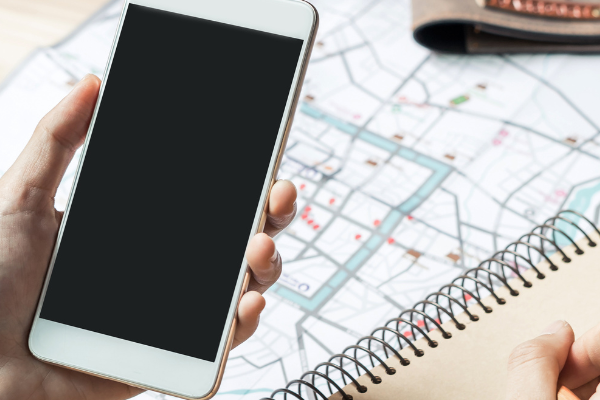You’ve been considering it for a while, dreaming about it for even longer, and now you’re ready to take the first step towards learning Spanish – great! But now what?
Learning a language is a commitment, and you likely have some questions before you start. Luckily, we’ve answered some of the most common questions to get you started…
1. How long does it take to learn Spanish?
Let’s start with everyone’s first question when learning Spanish: how long will it take? Before you commit to learning a language, you will want to know when you’ll be ready to put it into action! Unfortunately, this isn’t a simple “one-answer-fits-all” question – there are a few things that may affect it:
- Your native language
- How long will you be studying per day/week?
- Your personal learning speed
- Will you have a teacher, or are you teaching yourself?
- What is your end goal?
That being said, teachers have noticed a general trend in the speed of their learners, in fact, the US Department of State has whittled this to a specific number of years, so how many does it take to learn Spanish?
For a native English speaker, it should take around 600 classroom hours to reach a B2 level in Spanish.
This, however, only covers one specific native speaker and one specific goal in mind; make sure to do some research on how long it could take you to learn Spanish.

2. How hard is it to learn Spanish?
Along with time, you’re likely going to want to know how much effort you’ll need to put in before committing to learn Spanish. Fortunately, if you already speak a Latin language (e.g. Italian or French), or a language with heavy latin influences (such as English) Spanish is one of the easiest languages you can learn, so you’ll make progress in no time if you make an effort to learn Spanish fast.
For other families of languages ( e.g. German) Spanish can be a bit more of a challenge, especially if your native language has a different alphabet! So, be patient, and you’ll start seeing results with time.
3. Why is it important to learn Spanish?
If you’ve read this far, it’s likely you already have some pretty important reasons why you would want to learn Spanish, but if you’re still on the fence, we have a few points for you to consider:
- Spanish is spoken natively by 470 million people worldwide, making it the second most widely spoken language in the world
- Across the world, the Spanish language makes up 6.04% of the world’s GDP – the third highest, behind Chinese and English.
- On the internet, Spanish is the third most used language and the second most used across social networks!
Overall, Spanish is a wide-reaching language across the world: whether it’s the geographical, digital or economic world – so learning it will boost your career, no matter which industry you may be in.
4. How do you start learning to read Spanish accurately?
Learning to read Spanish doesn’t happen overnight, and reading accurately takes time to perfect, but there are a couple of ways you can improve before you even get started. For example:
- Practise reading with materials that you find interesting – these can be books or even series with subtitles on! Here are our favourite TV shows for learning Spanish
- Find cognates (words shared with your own language) within Spanish to help you quickly gauge the meaning and context in a sentence with just one word
- Start with the letters and numbers: The building blocks of any language, you’ll find things much simpler if you start by understanding how to read/pronounce them!
- Speak while you read. This is a no-brainer: you get speaking practice with your reading practice! It will help your mind get used to processing Spanish naturally
5. How do you start learning to Speak Spanish fluently?
You may have noticed that we’re speaking about fluency rather than accuracy. So, what’s the difference between fluency and accuracy?
- Accuracy is how correct you use the language – it specifically relates to the rules of the language – such as grammar, punctuation and spelling.
- Fluency relates to how naturally you can use the language. This is primarily about your speaking ability – if you’re able to hold a conversation without many pauses, it shows fluency
Because of these differences, you need to approach your quest for fluency a little differently than how you would approach accuracy. Building fluency generally focuses on the more practical aspects of learning a language and communicating while using it, and there are plenty of ways to develop your skills:
- Learn the accents and slang of Spanish – this will help get you into the mind of a native speaker, and even make you sound more like one!
- Practise speaking with a native speaker in your country – you can usually use apps like Meetup or Craigslist to find language exchange groups for this particular purpose
- Record your own voice – this will help you take note of any mistakes or trip-ups that you already have
- Visit a Spanish-speaking country – this is an unrivalled way to internalise your language. Visiting a Spanish-speaking country will force you to practise your language skills on a day-to-day basis, and you’ll start to adapt quickly
6. Should you choose Latin American Spanish or Spanish from Spain?

Now, this is a tough question! The differences between Latin American Spanish and European Spanish can range from grammar to slang and accents.There are also a tonne of words that you may use in one country and miss in another.
One noteworthy example of this is the second-person singular of “vos”, used in Spanish when the language was brought to Latin America, but it soon fell out of favour in Spain itself. Today, you can still hear the word frequently used in many countries of Latin America (such as Argentina and Uruguay), but it is almost entirely retired in Spain. There are plenty more examples such as this, in which you’ll notice a big variation of both vocabulary and grammar, rather than just slang and accents.
By now, you may be starting to panic while frantically buying as many regional dictionaries as you can afford, but there is no need! Most native speakers will understand you, no matter which variant of Spanish you choose to learn. So, the choice essentially boils down to your own personal preference and where you plan on using Spanish throughout the world, which brings us to…
7. Where should you learn Spanish?

You may have already started your lessons to end up in a specific country or city, or you may have already decided on staying at home and keeping your Spanish as a handy extra skill. That’s fine! Decisiveness is great, so feel free to skip to the next point. But, if you’re still on the fence as to where you want to learn Spanish, you should think about:
What are your motives for studying? Are you looking into a specific industry/university?
What makes you passionate about Spanish? Is there a specific culture, food, dance or TV show that attracted you to the language?
Which type of countries do you generally like to visit? Do you want to be close to home or take a bigger adventure?
8. Should you learn Spanish by yourself or with a teacher?

Now, it’s important to remember here that there’s no particular “right” answer to this question. The way you learn Spanish should come from your own preferences, budget, and availability.
That being said, it’s no secret that classroom learning is the preferred method of study for most long-term students of any language. Choosing to study in a classroom has plenty of advantages that justify the extra commitment, including:
- Personal attention that can be shaped around your needs and preferences
- Constant evaluation to measure your progress
- A fun and stimulating environment to learn organically
- Classmates to help you practise your skills and motivate you
- A dedicated space in which to study Spanish
Overall, your choice of learning should depend on your personal situation, apps can be a great way to get a feel of your target language before committing to a longer/more expensive course, but generally, you’ll get a lot more out of an in-person course (preferably in a country that speaks Spanish natively!)
Now, that you have all the answers, there’s just one more question to ask:
When can you start learning Spanish? This question has the easiest answer of all: you can start right now! Just contact our team, and we’ll help you find the ideal programme to learn Spanish and tick all of the boxes above.



